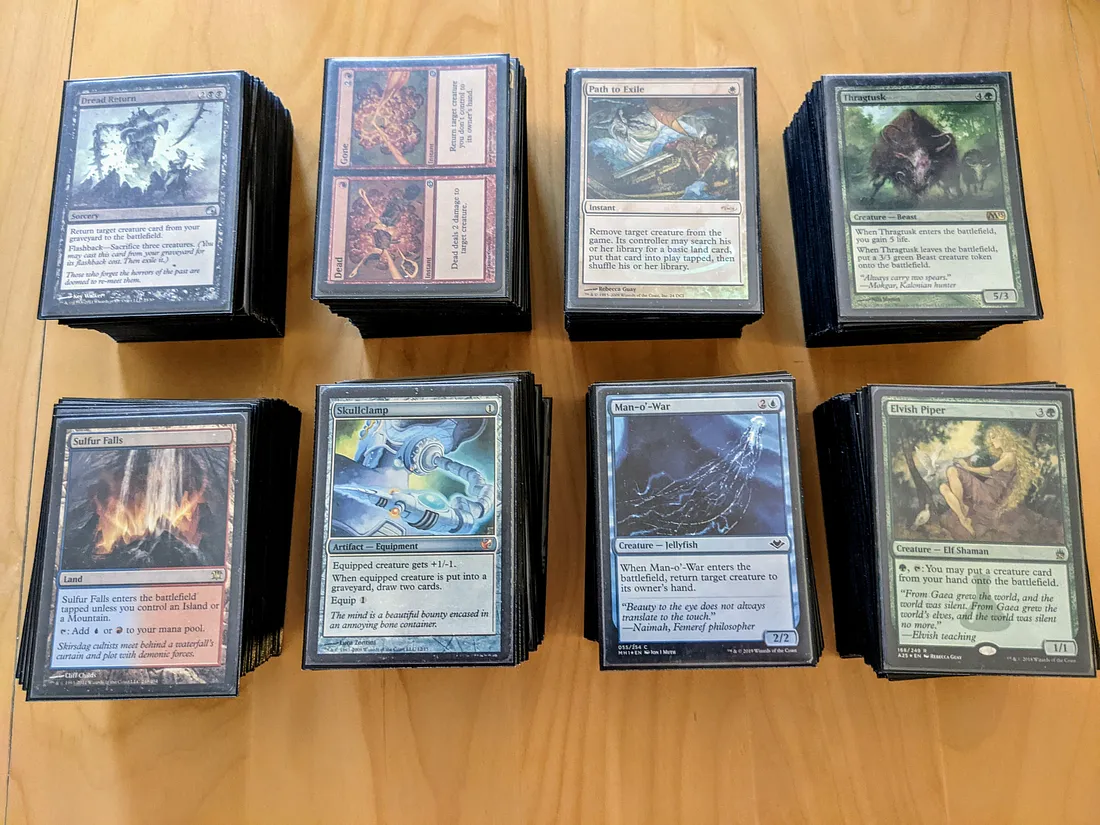
Creating your first Magic: The Gathering (MTG) Cube can be a rewarding and enjoyable experience for both casual and competitive players. A Cube is a curated set of MTG cards designed for draft play, where players build their decks on the spot from the Cube’s card pool.
*header image by Natalie Weizenbaum from Mex3.medium.com website.
Here’s a step-by-step guide to help you create your first MTG Cube:
Step 1: Define Your Cube’s Parameters
Before you start selecting cards, decide on the following parameters for your Cube:
- Cube Size: Determine how many cards your Cube will contain. A typical Cube contains 360 to 540 cards, with 360 being the minimum for an eight-player draft.
- Power Level: Decide whether you want a high-powered, competitive Cube or a more casual, fun Cube. This will influence the card choices you make.
- Archetypes: Think about the archetypes you want to support in your Cube. These are specific strategies or themes that players can build their decks around.
- Set Inclusion: You can choose to include cards from any set or stick to specific sets, themes, or blocks.
Step 2: Gather Cards
Once you’ve defined your Cube’s parameters, start gathering the cards you’ll include. You can acquire cards from your collection, trade with friends, or purchase singles online. If you have budget constraints, consider using proxies (reprints of cards with your Cube’s name and card information) for expensive or hard-to-find cards.
Step 3: Card Selection
When selecting cards for your Cube, aim for diversity in terms of colors, card types, and power level. Here are some tips:
- Balance: Ensure an even distribution of colors and card types (creatures, spells, artifacts, etc.) to promote diverse deck-building.
- Power Level: Adjust the power level to match your desired Cube experience. Include powerful cards if you want a high-powered Cube, but be mindful not to make it too oppressive.
- Archetypes: Include cards that support the archetypes you’ve defined. For example, if you have a “Goblins” archetype, include cards that interact with Goblins or create them.
- Mana Curve: Include cards with various mana costs to support different strategies and ensure that players can build decks of different speeds.
- Removal and Interaction: Make sure there’s an appropriate amount of removal, counterspells, and interaction to keep games engaging.
Step 4: Build and Test
With your card pool ready, build the Cube by creating packs with a specific number of cards (e.g., 15-card packs for an eight-player draft). Shuffle your Cube well to ensure randomness in the draft.
Test the Cube with friends or in solo drafts to ensure it’s balanced and fun to play. Make adjustments as needed, adding or removing cards to improve gameplay.
Step 5: Hosting Drafts
Now that your Cube is ready, invite friends over for Cube drafts. Here’s how to host one:
- Draft Setup: Set up a drafting area with booster packs (cards from your Cube shuffled together) and basic lands for deck construction.
- Drafting: Follow the standard draft format, such as a Winston Draft, a Cube draft format, or the more traditional Booster Draft.
- Deck Construction: After drafting, players build decks from the cards they drafted, adding basic lands as needed.
- Play: Enjoy your games! Cube drafts often lead to exciting, varied, and skill-intensive matches.
Step 6: Maintain and Update
As you play and gather feedback, you may find that certain cards are overpowered, underused, or problematic. Periodically update your Cube to address these issues and keep the experience fresh.
Creating your first MTG Cube is a creative and rewarding endeavor. It allows you to curate your own Magic experience and share it with friends. Don’t be afraid to iterate and refine your Cube over time to make it even more enjoyable for everyone involved.
